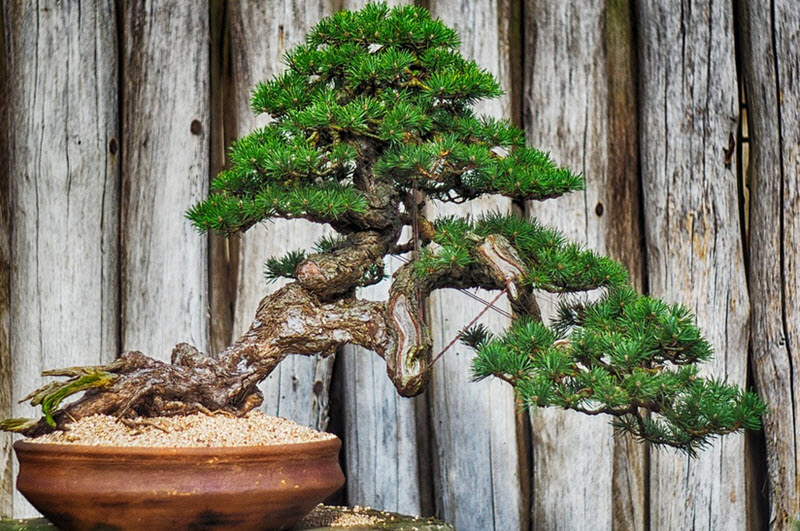Contents
Bonsai trees are often seen as a representation of the spiritual dialogue between humans and nature. Elegant, serene, and impressive in their miniature scope, they offer a chance to unwind and connect with the environment on an intimate level. However, taking care of these small trees requires time and dedication.
Bonsai tree care is not just about nurturing a plant; it’s about building a relationship with nature. It requires patience, learning, and effort. Therefore, don’t let the expansive amount of information overwhelm you. Instead, take one step at a time, and before you know it, you’ll enjoy the mesmerizing world of bonsai tree care.

Getting to Know Your Bonsai Tree
Before diving into the world of bonsai tree care, it’s vital to understand what your bonsai tree is.
Bonsai is not a particular species of tree, nor is it a genetically dwarfed plant. Instead, a wide range of regular trees are used to create bonsai trees, and they are kept miniaturized through pot confinement and various pruning techniques.
There are countless species of trees that can be turned into a bonsai, each with its own set of care requirments. Each type of bonsai tree has specific needs, and the recommendatinos for things such as watering, sun exposure, and temperature can vary greatly.
Watering your Bonsai Tree
Watering is a crucial part of bonsai care. Over-watering or under-watering can easily damage or kill your bonsai tree.
Plants kept in pots can easily develop root rot from over-watering. Make sure the pot has a drainage hole in the bottom, and preferably also a layer of gravel of similar that can separate the soil from water that has accumulated in the bottom of the pot, waiting to pour through the drainage hole.
How frequently the tree needs watering will depend on various factors that can change over time, such as room temperature and air humidity. As a rule of thumb, don’t water your bonsai tree on a fixed schedule. Instead, assess the tree’s needs daily by poking your finger about an inch deep into the soil. If it feels slightly dry, it’s probably time to water it. Of course, this general recommendation might not be true for your particular bonsai tree if it belongs to species with unusual watering requirements. It is alsways best to seek information regarding your particular tree instead of relying on general recommendations.
Light and Temperature Conditions
Most bonsai trees require ample amounts of light for healthy growth. Indoor bonsai trees are usually kept near a window that gets plenty of sunlight, while some might even require additional artificial lighting. If you are keeping a bonsai outdoors, make sure it gets the recommended combination of sun and shade for that particular species. Some might for instance be sensitive to harsh sun light in early spring, and benefit from some mixed shade during that part of the year.
Soil
Using the right soil mix for your bonsai is fundamental for its health. Preferably, seek information regarding the species you are keeping.
The general recommendation is to use a well-draining soil mix, e.g. one with akadama, pumice, and lava rock. Bonsai trees are also heavy feeders.
Fertilizer
Use a high quality fertilizer with the right balance of nitrogen (N), phosphorous (P), and potassium (K). It must include the necessary trace elements for the tree, such as iron and zinc.
With a liquid fertilizer, it is generally safer to dilute it and serve it more frequently, instead of giving a more concentrated serving less frequently.
Keep an eye on your bonsai and notice how and if it reacts to the feedings. You need to be ready to adjust the feedings according to the needs of your particular bonsai, and those needs can change over time.
Pruning and Training your Bonsai Tree
Pruning and training your bonsai tree are vital parts of the bonsai care regimen. Pruning helps to maintain its shape, while wiring and shaping techniques help to achieve the desired bonsai design. However, these are advanced techniques. You need to put effort into learning about various methods and practising them. Today, a wealth of information can be found online, so you do no need to travel to Japan and seek out a bonsai master in person.
Protecting against Pests and Diseases
A well-cared bonsai is generally resistant to pests and diseases, and keeping your bonsai in good condition will prevent a lot of problems.
However, even the best-cared bonsai can sometimes get affected by insects or illnesses, especially if other plants in the house or garden have turned into breeding grounds for patogens.
Regularly inspect your bonsai for any abnormal signs, and if necessary, use treatments to handle the issue. Also take good care of all the other plants to prevent problems.